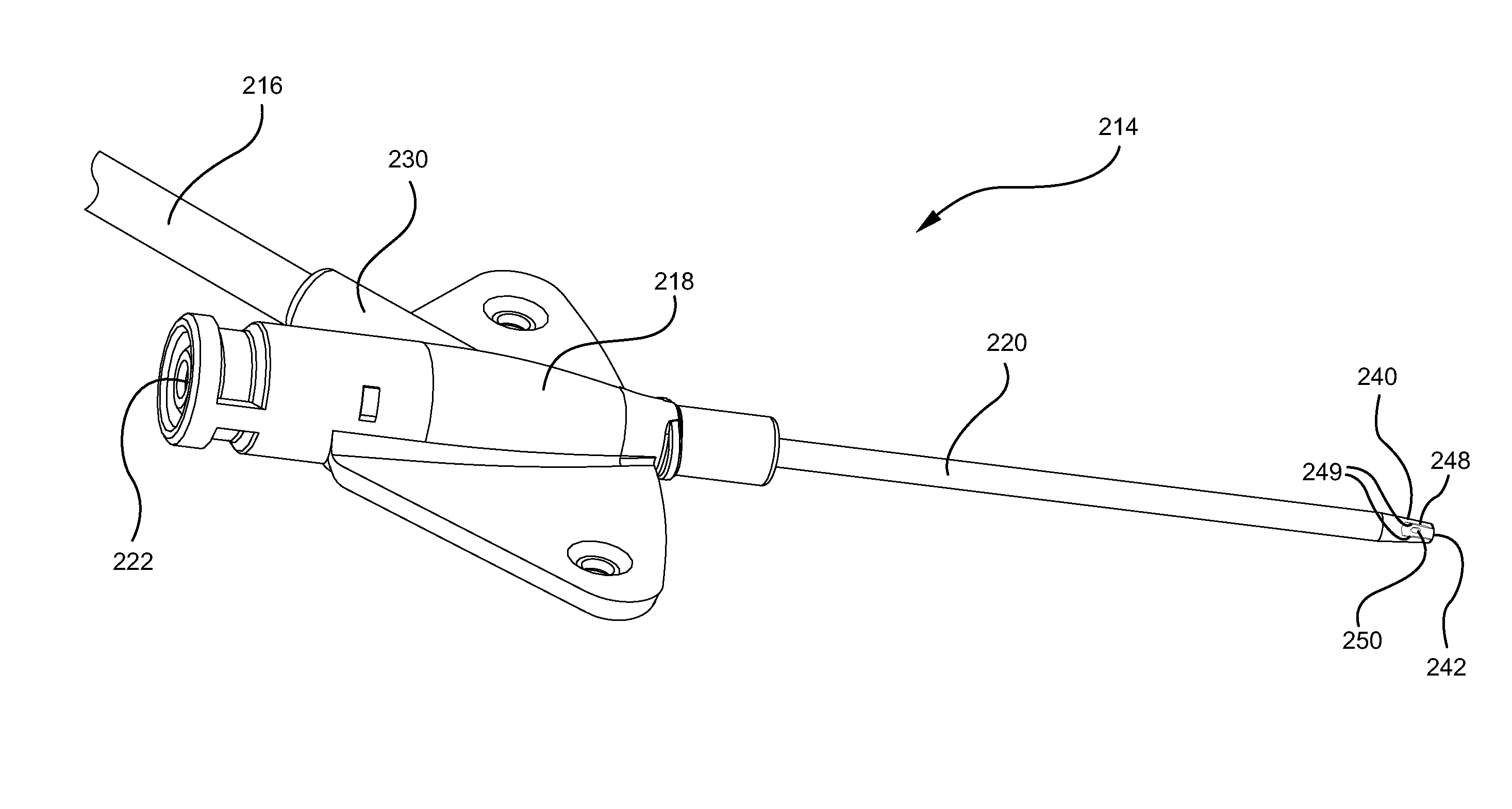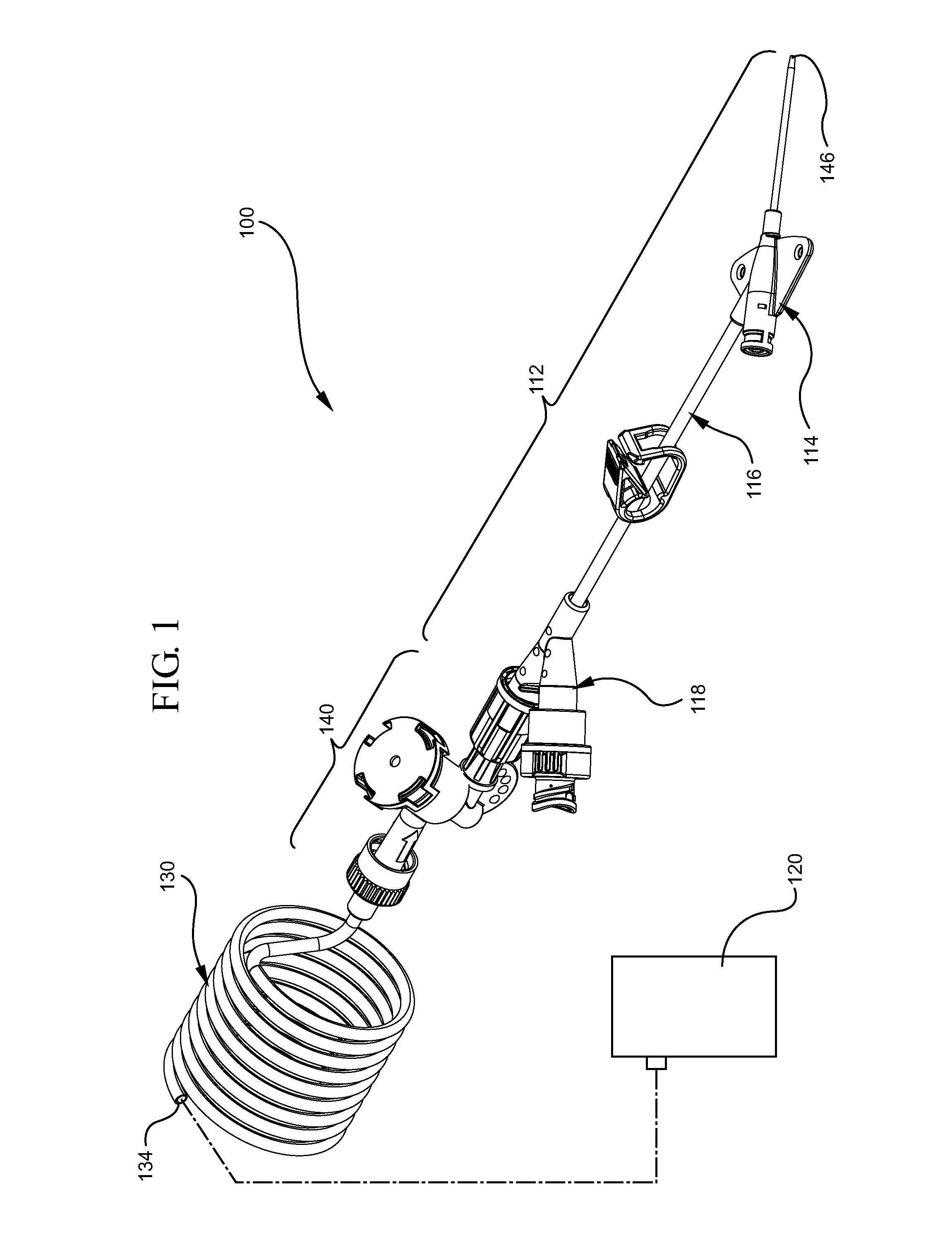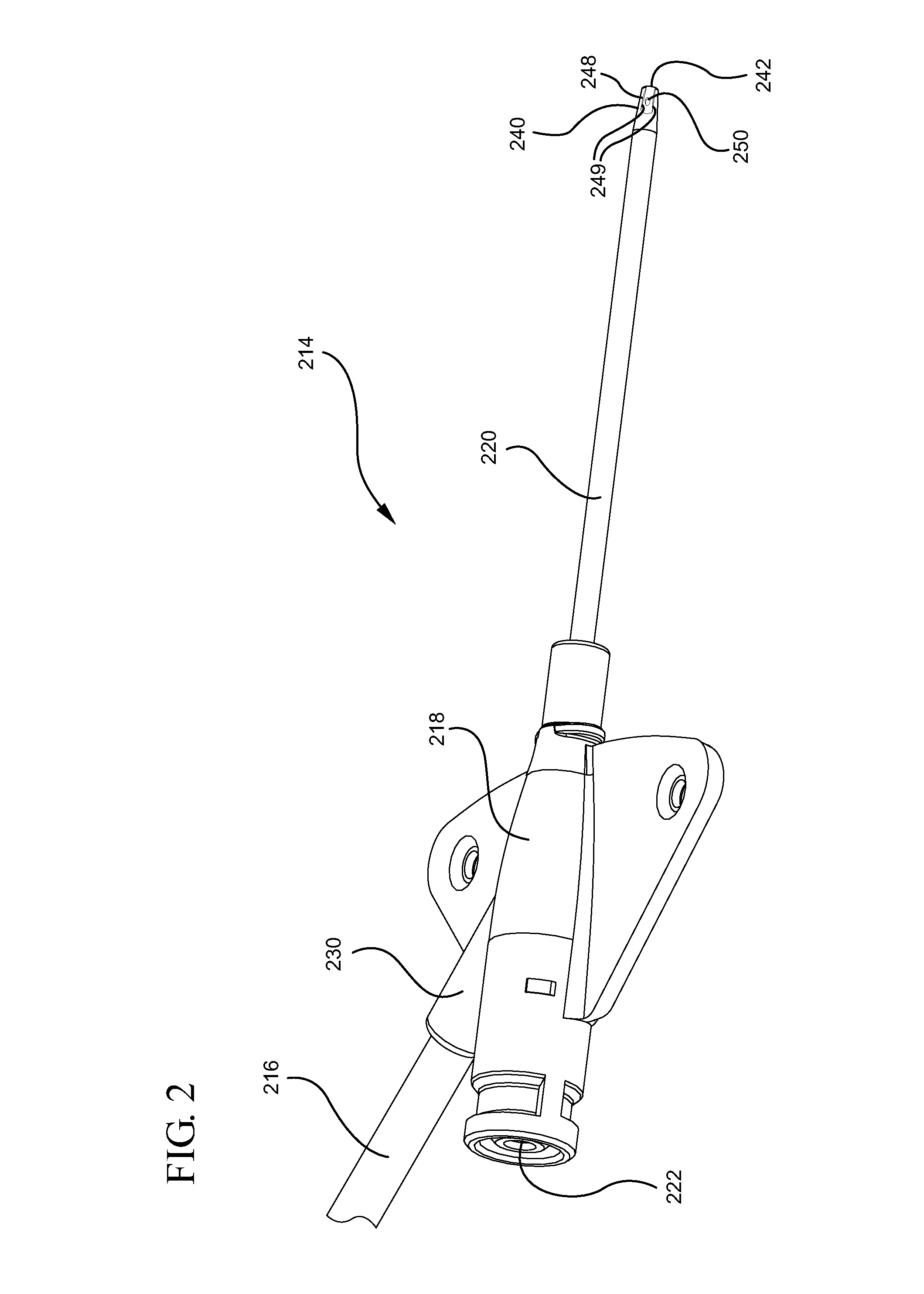Systems and methods to increase rigidity and snag-resistance of catheter tip
a technology of rigidity and snag resistance, which is applied in the direction of catheters, metal working devices, metal-working devices, etc., can solve the problems of high pressure within the infusion system, failure of the infusion system components, and undesirable acceleration of infused fluid, so as to achieve faster and more efficient rapid infusion procedures
- Summary
- Abstract
- Description
- Claims
- Application Information
AI Technical Summary
Benefits of technology
Problems solved by technology
Method used
Image
Examples
Embodiment Construction
[0029]Embodiments of the present invention will be best understood by reference to the drawings, wherein like reference numbers indicate identical or functionally similar elements. It will be readily understood that the components of the present invention, as generally described and illustrated in the figures herein, could be arranged and designed in a wide variety of different configurations. Thus, the following more detailed description, as represented in the figures, is not intended to limit the scope of the invention as claimed, but is merely representative of presently preferred embodiments of the invention.
[0030]The systems and methods of the present invention are generally designed for use in combination with a vascular infusion system capable of rapidly delivering an infusant to the vascular system of a patient. Referring now to FIG. 1, a vascular infusion system 100 is shown, in accordance with a representative embodiment of the present invention. Infusion systems of this t...
PUM
| Property | Measurement | Unit |
|---|---|---|
| internal pressures | aaaaa | aaaaa |
| angle | aaaaa | aaaaa |
| angle | aaaaa | aaaaa |
Abstract
Description
Claims
Application Information
 Login to View More
Login to View More - R&D
- Intellectual Property
- Life Sciences
- Materials
- Tech Scout
- Unparalleled Data Quality
- Higher Quality Content
- 60% Fewer Hallucinations
Browse by: Latest US Patents, China's latest patents, Technical Efficacy Thesaurus, Application Domain, Technology Topic, Popular Technical Reports.
© 2025 PatSnap. All rights reserved.Legal|Privacy policy|Modern Slavery Act Transparency Statement|Sitemap|About US| Contact US: help@patsnap.com



